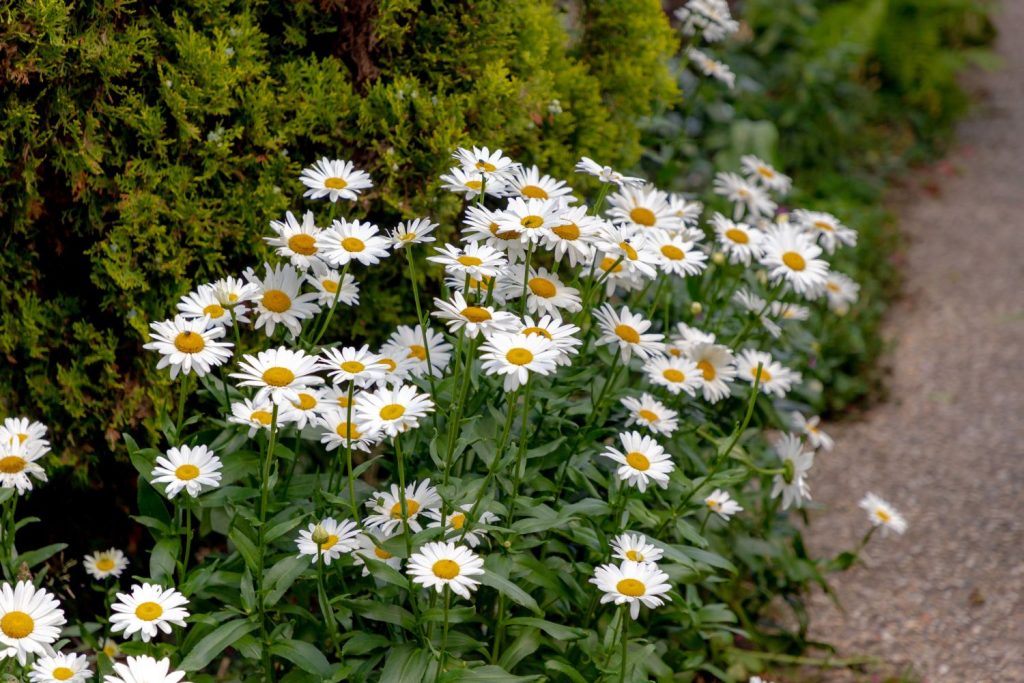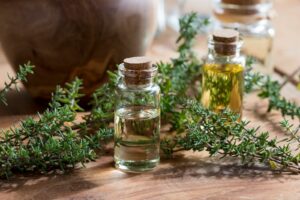Planting Leucanthemum: when, where & how
Daisies grow abundantly in many flower meadows, but they also make a charming addition to both gardens and balconies. Find out everything you need to know about planting Leucanthemum.

As with other members of the Leucanthemum genus, daisies are distinguished by their height and radiant blossoms. Read on to learn where and how to plant Leucanthemum and find out how to sow Leucanthemum seeds.
Where to plant Leucanthemum
Whilst the individual species and varieties of Leucanthemum differ a little in their requirements, they also have a lot in common. Overall, none of the species are particularly demanding. Oxeye daisies (Leucanthemum vulgare) favour low-nitrogen soils, but also tolerate nitrogen-rich soils. Max chrysanthemum (Leucanthemum maximum) are probably the most demanding species, preferring a nitrogen-rich soil in order to thrive. You can find more in depth information on the daisy species and varieties in our dedicated article.
The most important thing to consider when planting daisies is location. While they tolerate partial shade, full sun is ideal. Taller species, such as the oxeye daisy, should be planted somewhere somewhat sheltered from the wind or given a support. If you would like to know more about how to care for daisies, visit our separate article.

Sowing Leucanthemum seeds
Daisies can be bought as pre-grown plants or grown from seed. You can collect seeds from the plants of Shasta daisies or oxeye daisies, for example, in the year prior. To find out more about how to collect daisy seeds, see our daisy plant profile. Alternatively, you can also buy the seeds of popular species such as those of Shasta daisies. The best time to sow Leucanthemum seeds is in the spring, when temperatures are above 20 °C. However, they can also be sown in the autumn, provided they can overwinter indoors or in a frost-free greenhouse. Follow these steps to successfully germinate your daisy seeds:
- Moisten the substrate. Leucanthemum seeds are very light, so will wash away if you water after sowing.
- Scatter the seeds evenly. To make distributing these fine seeds easier, mix with a little sand and then scatter the mixture.
- Press the seeds lightly onto the surface, making sure not to cover them with soil.
- When watering, use a fine misting nozzle so as not to displace the fine seeds.
- Seeds should germinate within 14 – 28 days.
- Keep the soil moist until the first seedlings appear. The seedlings still require regular watering, but at this stage they are more tolerant of dry spells.

Tip: it is also possible to simply scatter daisy seeds in situ, which might be suitable for species grown in informal wildflower gardens, such as the oxeye daisy. Daisy seeds may also spread naturally with the help of the wind. However, knowing how to purposefully grow oxeye daisies from seed will ensure a much more successful germination.

Planting Leucanthemum: step-by-step
The best time for planting Leucanthemum is around Mid-May, or once the risk of frost has passed.
Planting Leucanthemum in the garden
Daisies like to spread both above and below ground, so choosing a location which has plenty of space is vital. Around a quarter of a metre is enough for most species. Once you have chosen the perfect spot, proceed as follows:
- Dig a hole around 20cm deep and place the daisy plant inside, ensuring that the foliage is above ground level.
- Adding a boost of nutrients, with garden compost for instance, may be necessary at this stage. It will depend on which daisy species you are planting and your existing soil type. You can find out about the individual requirements of different daisy species and varieties in our dedicated article.
- Cover the roots completely with soil and press the plant down lightly to compact a little.
- Water the daisy regularly to support root growth.
Tip: where and how to plant Leucanthemum varies between each species. Oxeye daisies come into their own when planted abundantly in informal wildflower gardens and meadows. Shasta daisies look their best planted in groups or clusters, creating a fuller and bushier effect. Non-hardy species are best planted in pots, allowing them to be overwintered easily in a frost-free environment.

Planting Leucanthemum in pots
Neither oxeye daisies nor Shasta daisies are well-suited to planting in pots. However, the more compact daisy species and varieties can grow successfully in pots. Cultivars intended for planting on balconies can also tolerate a moister substrate and will likely flourish when grown in a pot with a high-quality, nutrient-rich potting soil. Our peat-free Plantura Organic Flower Compost, for instance, is ideal for this, as it contains plenty of nutrients and is designed to support lush, long-lasting flowers.

- Perfect for all flowering plants in garden beds & pots
- For beautiful blossoms & healthy plant growth
- Peat-free & organic soil: CO2-saving composition
To plant your Leucanthemum in pots, follow these simple steps:
- Choose a large pot that holds at least 3 litres to ensure the daisies have the space they need to grow. Make sure the pot has drainage holes and create a drainage layer for good measure.
- Add a little soil to the bottom of the pot first if needed. Place the plant inside and top up with more soil. Ensure the foliage remains above the substrate.
- To support the rooting process in the following weeks, water the daisy consistently, but ensure the soil does not become waterlogged.

Leucanthemum companion plants
Generally speaking, plants that have similar location requirements to the respective daisy species make good daisy companion plants. They should also be compatible aesthetically and in terms of height. Take a look at a wildflower meadow for some inspiration and ideas for which plants are best to grow with oxeye daisies. You will probably see meadow sage (Salvia pratensis), the common poppy (Papaver rhoeas), cornflowers (Centaurea cyanus) and clover (Trifolium) growing alongside them. These also make excellent neighbours in the garden. Daisy species that do well on the balcony can be combined with chrysanthemums (Chrysanthemum indicum), whereas dwarf daisy varieties suit being planted alongside Colombia phlox (Phlox douglasii).

Not all daisies are winter hardy. Find out what you need to keep in mind when overwintering daisies in the linked article.























